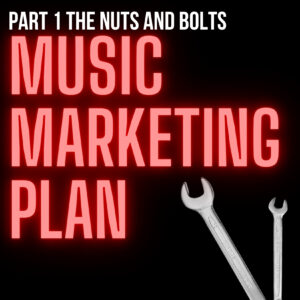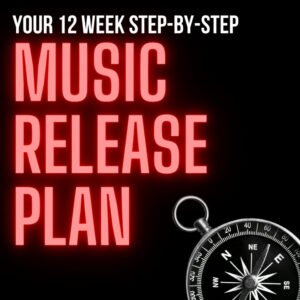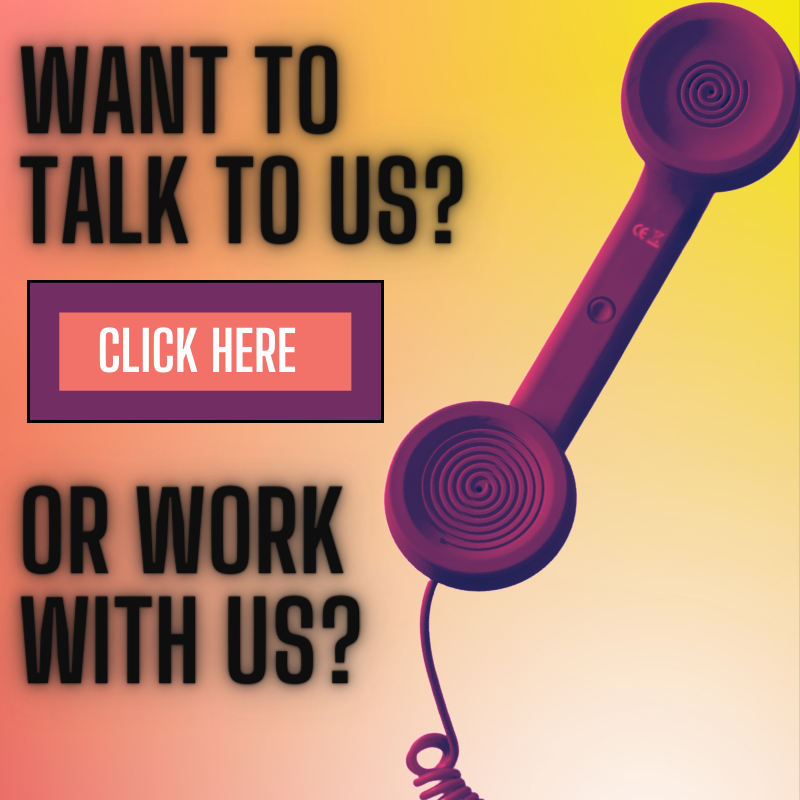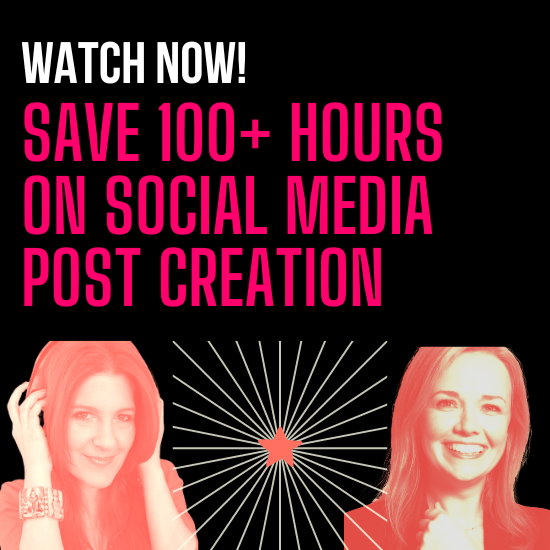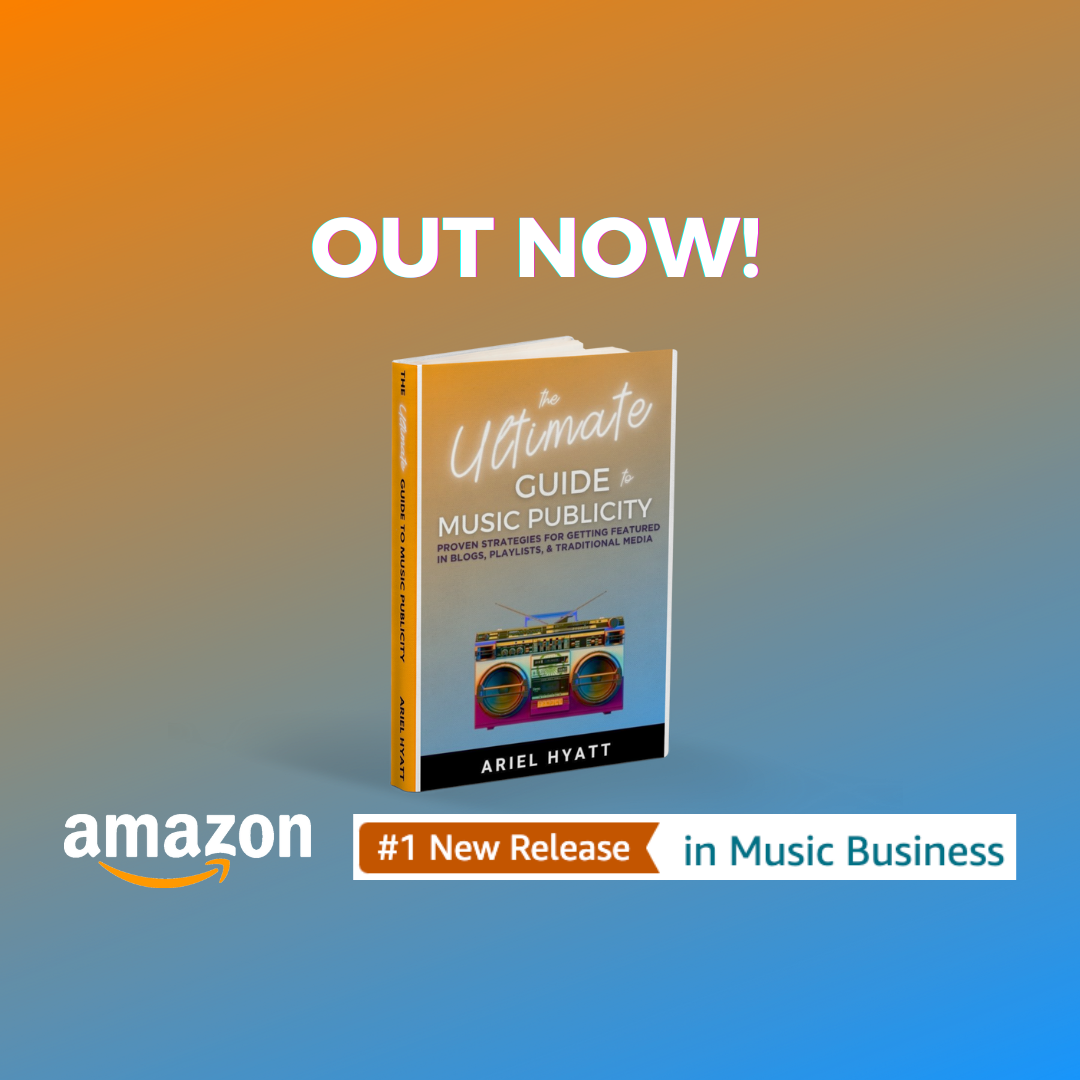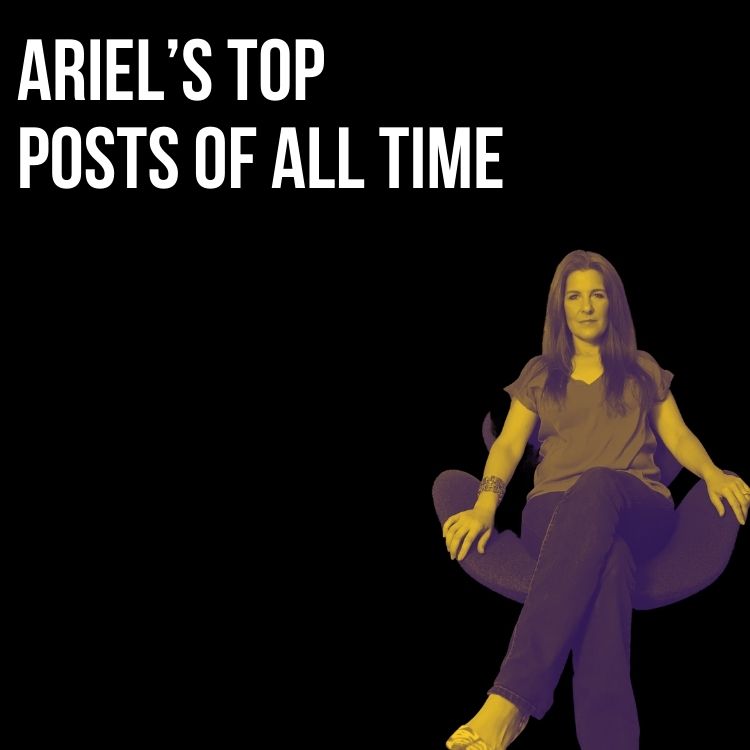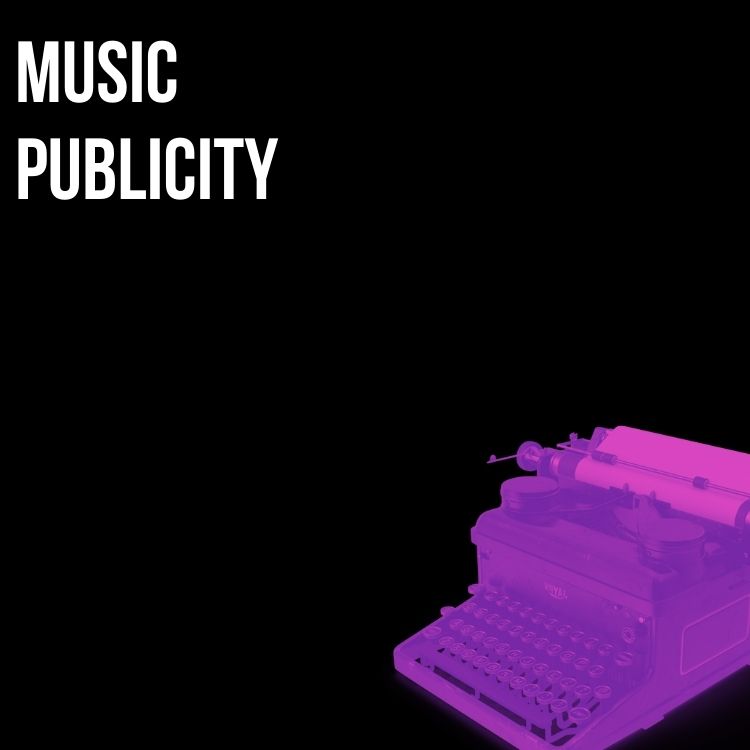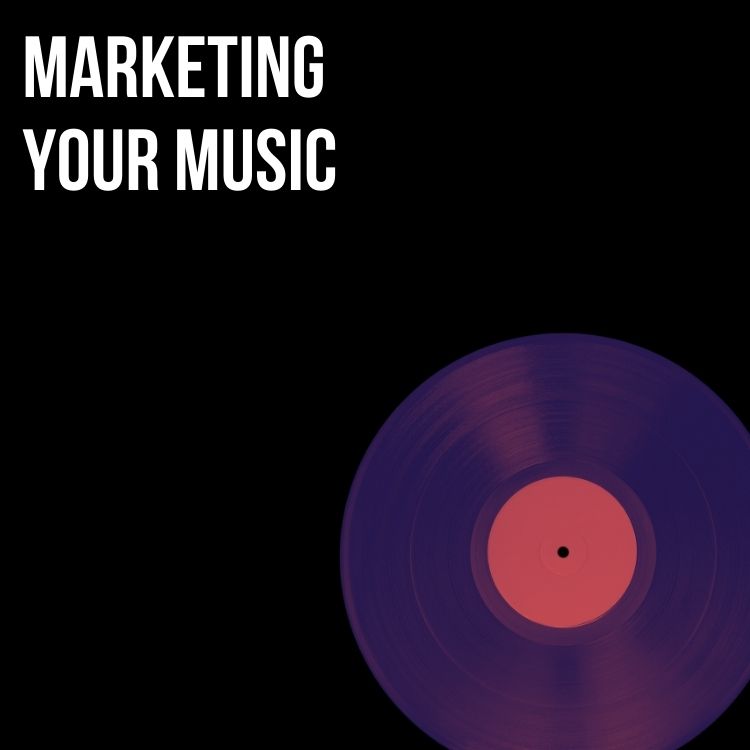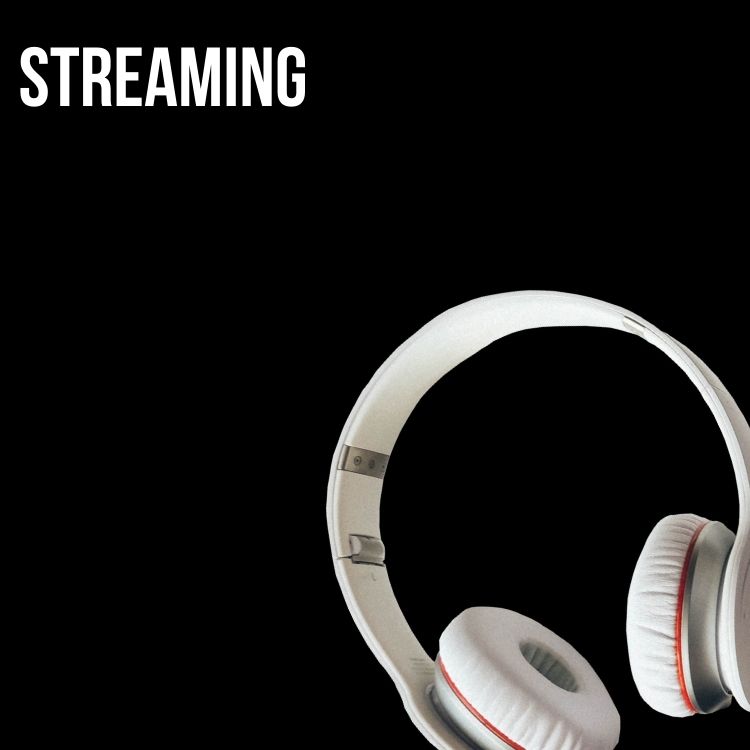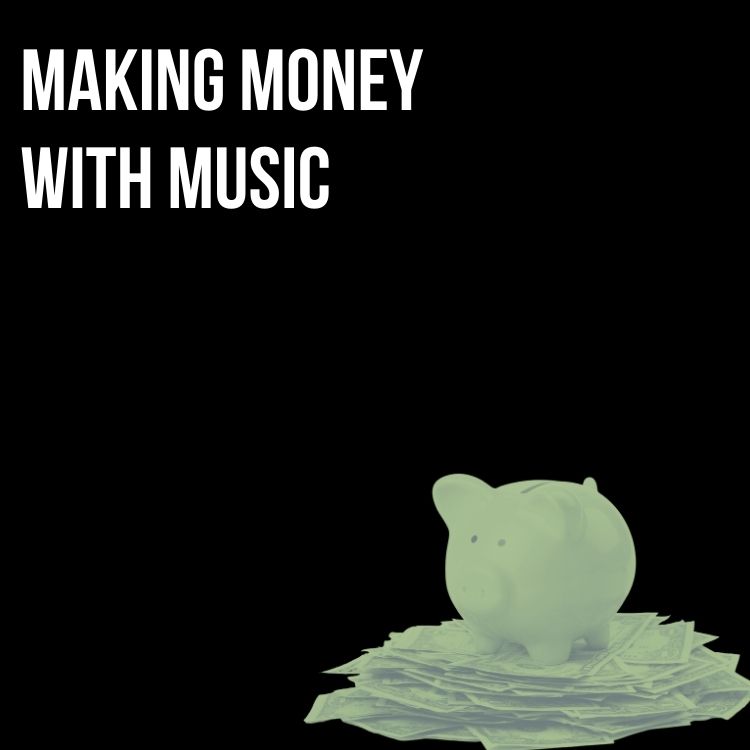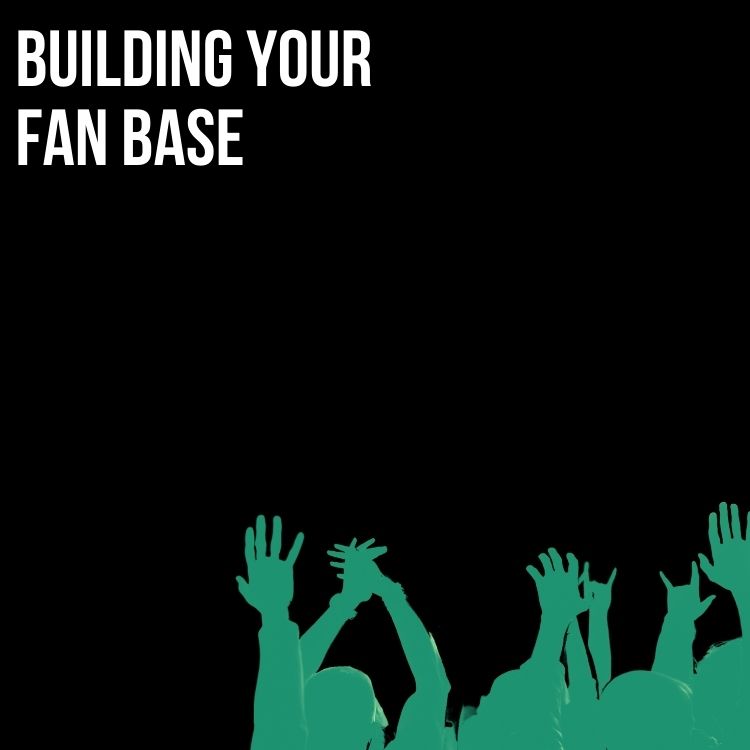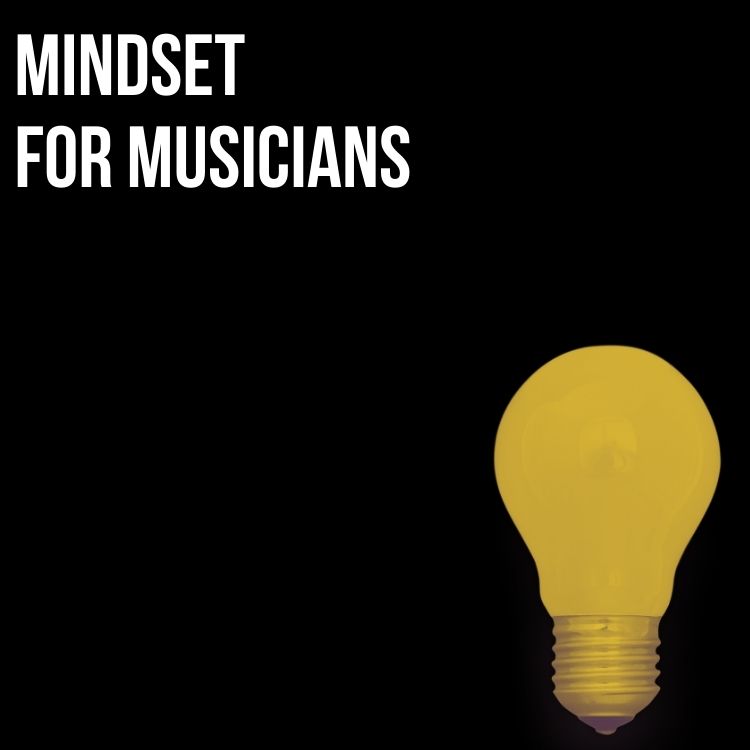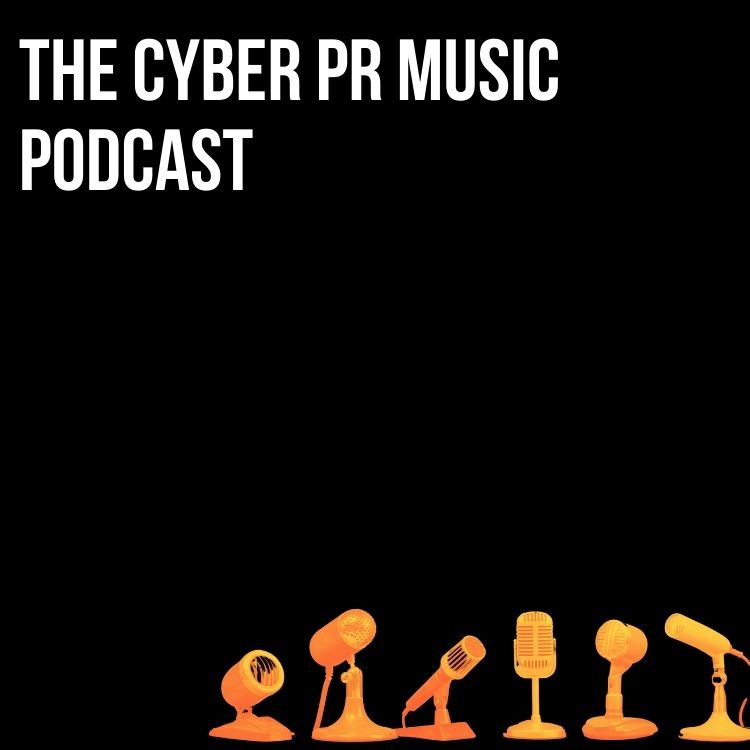
Our Musician Marketing Plan posts are the most popular series. This is the final part on how to build a comprehensive music marketing plan, which is the most effective thing we do as an agency.It has been updated for 2024.
We have already outlined building a solid foundation for your music marketing plan in Part 1 – The Nuts & Bolts, and outlined strategies for a successful music release launch in Part 2.
Now it is time to kick back and relax for a little while before starting to write material for the next single, album, or EP that you’ll release down the road, right? Wrong. It couldn’t be further from the truth.
Musician Marketing Plan Guide Part 3
Take a look at the Part 3 VENN diagram which visualizes your Musician Marketing Plan. For each part, we have highlighted the sections we are covering in red so you can see how all of these parts work in concert with one another.
The Constant Five: The Ongoing Work! AKA Keeping Up Momentum
If you haven’t downloaded our Musician’s Marketing Plan Checksheet, now would be a really great time to do so. It was designed to help you go deeper (plus, checking things off feels really good!).
Your job now during this phase of your music marketing plan is to keep supplying consistent, compelling content in the form of new music and great social media posts. You must take the time after posting to engage with your fans. This will nurture your relationship with them. Then, it’s time to start strategizing for industry connections and monetization. This can also be daunting for introverted musicians, so a plan is crucial.
11. Keep The Music Coming
12. Fan Nurturing
13. Create Consistent Content
14. Strengthen VIP/Industry Connections
15. Making Money
11. Keep The Music Coming – Keep Your Music Marketing Plan Momentum Up!
A music marketing plan these days is about consistent waterfall-style releasing. Spotify recommends a new release every 4-6 weeks and we do too. It is a singles world, after all. Releasing singles and videos will keep fans engaged consistently. This is what you should strive to accomplish. You also want to submit each new track for playlisting consideration both through Spotify and SubmitHub.
You need a skillset for this to understand how to use Spotify for Artists. Login and watch their amazing videos to brush up on the most effective ways to get the music out there. Remember, you’re not limited to just releasing original new tracks.
A best practice for keeping fans engaged with Spotify is the plan to release something every 4 to 6 weeks. This does not mean you have to write new songs, although that is always great, of course. You can also strategize on this platform by having an Artist Pick up, keeping your photos updated, and creating personal, branded, and mood-based canvases and playlists to share with your followers.
Create Alternate Versions of Tracks
Get a DJ to remix one of your songs. This does not have to be a famous DJ. Choose someone familiar with what’s trending on submithub or has worked with an artist you love.
Or take a page from Nirvana and release an album of stripped-down “unplugged” versions of your studio tracks. This is a great way to show a different side of the band and appeal to potential new listeners within the acoustic genre.
Lastly, release a live album, preferably from the release show, but any show will work as long as the audio is of top quality. In today’s climate, we know live shows are few and far between. Try recording songs from a livestream concert!
Make Videos
Video is an integral part of your music marketing plan – and the most popular type of content on social media right now. Share and upload more videos: official music videos, lyric videos, live videos, vlogs, Facebook Live sessions, Instagram Live, etc. You can also share other videos if they fit into your branding and social media strategy, such as cooking videos, makeup routines, etc. Use your music in the background to create awareness.
Record Cover Songs
Music fans love covers – more importantly, so does YouTube. Recording cover songs is a great strategy for your music marketing plan. This works to gain awareness by tapping into what people already know and provides fun content to share. You can cover artists that inspire you or similar sounding artists. Covering a song outside of your genre and making it your own can be a great way to tap into a new fan base. This is what the pianist Scott D. Davis did when he decided to combine his love of heavy metal with the piano pieces he was recording. The result was millions of YouTube hits for his metal covers and new fans from the heavy metal community. Scott has been invited to open for Godsmack, Korn, P.O.D., Sevendust, Vince Neil of Mötley Crüe, and Queensrÿche.
*Please note, to legally sell a cover song, you must obtain and pay for a mechanical license. Harry Fox Agency is the foremost mechanical licensing agency in the US. Work with the company We Are The Hits to legally make money from cover songs.
12. Fan Nurturing
In their desperate desire to connect with as many fans as possible, artists forget that not everyone “out there” is the same. You must understand the differences and create a separate communication method with each community. Some may be following you simply because they liked your sunglasses or your cat and have no idea you are even a musician, while others are waiting to like and comment on every post. I wrote a 3-part series that explains how to nurture each one up to the next level of fan.
Community #1: Your Super Fans
These fans are primarily your closest friends and your live audience. You know them by name. If you play live, they attend your shows regularly and buy merch. They are the first responders when you post on social media, and they follow you on multiple channels. It is important to remember to talk to fans online and interact if you see them in person.
Community #2: Engaged Fans
These fans are your Active Online Audience. They are fans on your email list, video watchers, and active Social Media engagers who frequently comment & engage with you online.
Community #3: Ambient Fans
These fans are your Passive Online Audience and they are your social media friends who are aware of you via Twitter, Facebook, Instagram, etc. but don’t actively communicate with you and may not have ever even heard your music (yet).
Don’t Neglect Your Email List & Study Write Email Nurture Sequences
Emails should still be going out once a month, and your socials should never go stale. Just because you may not have a big “news” item (a new release) doesn’t mean you should stop communicating on a regular basis. You should also be consistently building your list.
13. Create Consistent Content – Ongoing Social Media
Update Your Socials Daily
Update daily, respond, and interact. Post about things happening in your life. News, food, parenting, fashion, art, sports, and other musicians are topics to engage and connect around. Follow our Social Media Pyramid for content guidance.
Be sure to post Instagram Stories frequently to keep yourself at the top of your follower’s timelines. Use hashtags and location stickers to reach a broader audience AND use your music from within the app.
Use Hashtags
Add hashtags to Instagram. We suggest between 3 and 5. Instagram Stories allows up to 10 hashtags and one clickable hashtag per story. Choose hashtags with between 10,000 and 200,000 followers (more won’t attract fans).
Facebook, not so much—Hashtags on Facebook have grown to mean little. Using them does not make or break your post. Because many Facebook profiles are private, it is fairly difficult to track hashtag interaction, so I suggest adding one per post.
On TikTok, use relevant hashtags for your video. The more you post with those hashtags, the more followers, likes, and comments you’ll get. Plus, you’ll be building your community! TikTok limits captions to 100 characters, so keep the caption short and share the most essential hashtags first.
Using the Discover tab is essential for seeing what hashtags are trending.
TIP: Combine trending, popular, and niche hashtags to increase visibility and awareness.
Monitor hashtags to see what is trending and determine things that match your brand and style.
Visualize All Buzzworthy Moments
The more press and social media-worthy moments you generate, the better. Anytime a fan, playlister, or music blog mentions you share it. Create tiles with CTAs and links to Spotify, SoundCloud, Apple Music, etc.
Ideas to visualize and keep your socials fresh:
- Ask your family, friends, and fans to write reviews of your music
- Submit your music to Pandora for consideration and use the Pandora AMP program
- Make GIFS or boomerangs to keep the visuals fun
- Check for any new Spotify playlist adds and thank the playlist curators
- Do Facebook or Instagram or Volume.com Lives consistently
- ALL PR – blog, newspaper, magazine, show listing, podcasts, etc.
- PR Quotes – highlights from articles (make a few to share over time to mix it up)
- Radio Adds – Showcase the station logo and tag the DJ
- Live Show Announcements
- Ticket On-Sale Dates
- Film & TV Placements
- Milestones – Spotify playlist counts, award nominations & wins, etc.
- Follow CTAs (Follow me on Spotify, Facebook, Threads, etc)
Focus On Leverage
The whole point of having a music release strategy is to leverage it to achieve your big-picture goals.
My client wanted higher-profile gigs around his hometown, Denver. He leveraged his PR hits strategically by sharing visuals with the promoters/venues he was targeting. He did this by writing each a personal email saying: “I have retained a PR team to increase my visibility and they will work hard to promote shows I am booked to play.” Every time he was featured in an article, he posted it across social channels and tagged the venues and artists he appeared with. From his efforts, he began to get more gigs because he had something his competition did not – strong PR and proving he would promote. You can use a similar strategy. The moral of this story is? Always share successes!
14. Strengthen VIP/Industry Connections
I have never met a successful musician who does not rely on at least a few people in the music industry. Even if you never want to sign to a label you will need a team to help you. This could include management, booking agents or service-based companies to handle things like playlisting, publicity, marketing, production, and the list goes on.
Music Conferences
Music conferences are an incredible place to meet all these types of people and more. Conferences give you the opportunity for networking and self-growth. Once you are there, you want to be memorable.
Music conferences are invaluable when looking to learn and grow in the industry. There are so many types to choose from—small and intimate, huge and overwhelming, hyper-focused, or general. No matter which you decide to attend, you will have the opportunity to network, meet established professionals, and make connections with other artists, all of whom can be vital to your growth.
Music Mentors
Some artists (I’m looking at you, introverts) don’t like conferences. Read Industry newsletters and sites to get inspiration and keep up with people and the latest industry news. I highly recommend signing up for – DIY Musician, Water & Music , Platform & Stream, Hypebot, and the Billboard Bulletin newsletters.
There are many wonderful mentors you should know about who are working tirelessly to help support artists with free and paid options. I love Suz The Rock/Star Advocate, Bobby Owsinski, and Kyle Weber from IOTM.
15. Making Money With Your Music Marketing Plan
You want to be considered an artist and not a hobbyist, right? So making money is key to your music marketing plan as it is your ongoing strategy. I made this the last part of the 15 because a lot of building needs to happen before you can monetize. There are so many ways to make money in the business you may not have thought of many of them.
Merchandise
Merch has become very sophisticated over the last few years, there is no need to order a bunch of XL Mens fruit of the loom T-shirts. Our three favorite Merch ideas are
Print on Demand
Please avoid this costly music marketing plan mistake: You do NOT need to create merchandise until you have a fanbase who will buy merch and you need to have a sense of what they want. Don’t waste your money – print only what’s needed when it’s needed! We love Printful for this.
Vinyl
Is hot right now. According to a recent Guardian article, ” vinyl sales reached a 25-year high as consumers young and old have once again embraced physical formats of music.” Make sure you keep the fact that ordering can take months and make sure you are prepared to mail it out and carry it to shows (it’s heavy!) We love solid merch for short affordable runs (but note they take 10-12 weeks to order!)
DIY Craft Items
We also love the idea of creating unique DIY items as a vehicle for selling your music. Our client, Mary Jennings, sells beautiful bolo ties at her shows and in her Etsy store when she’s not on the road. We loved hanging out with her and watching her fans try on ties after her set.
Crowdfunding
Crowdfunding is a great way to fund an album, a tour, or a big idea. By the time your campaign ends, your contributors are invested in the idea and the journey, increasing their loyalty levels to “super fan” status. However, according to Fundable, the average crowdfunding campaign raises $7,000, and it takes dedication and perseverance to pull off successfully.
Also – no crowd, no crowdfunding, so make sure you have an actual dedicated fan base before you try this. To raise $5,000, you would need around 250 backers to give an average of $20 each. To raise $10,000, you would need around 500 backers, who would, again, give an average of $20 each.
Subscription Sites
Artists are also moving towards an area where people sign up to receive music via Bandcamp or support the creation of videos and content through Patreon.
Just because people don’t buy CDs anymore and even downloads are in decline, people are willing to support artists. You just need to give them the platform to do so and interesting items and experiences to offer.
Patreon
Patreon is all about content. This means you want to have consistent content to keep your patrons happy. Make sure to share exclusive content only available through your Patreon page. Here are some examples of musicians who slay at Patreon.
Ultimately, the success of any crowdfunding strategy will come down to you reaching out to your network through your newsletter and social media and getting them involved with both the funding and by helping spread the word about your Patreon to their friends and networks.
Experiences
Backstage meet, and greets, private Skype sessions, and dinner with the band before a show are all possibilities and should be built into your music marketing plan. You don’t need to run a crowdfunding campaign to sell experiences.
Make Sure Your Fans Know
Mention your Patreon on your website and across socials. Mention it in your YouTube videos and include a link to your page in the video descriptions.
I don’t want you to finish reading this three-part guide overwhelmed! When we write Total Tuneups for our clients, the intention is that they will take a full year to implement successfully. This requires a mindset allowing you to stay in it for the long haul.
Making the music and playing live are not the parts that are hard to focus on. It’s the 15 elements outlined here that can be challenging.
Now that you have read the final part of this 3-part music marketing plan series Download our Marketing Plan Checksheet to see what you have left to check off or still need to prepare…
Want more help with creating a marketing plan for your music? Schedule a call with us today
Subscribe for more!
Back to The Blog







